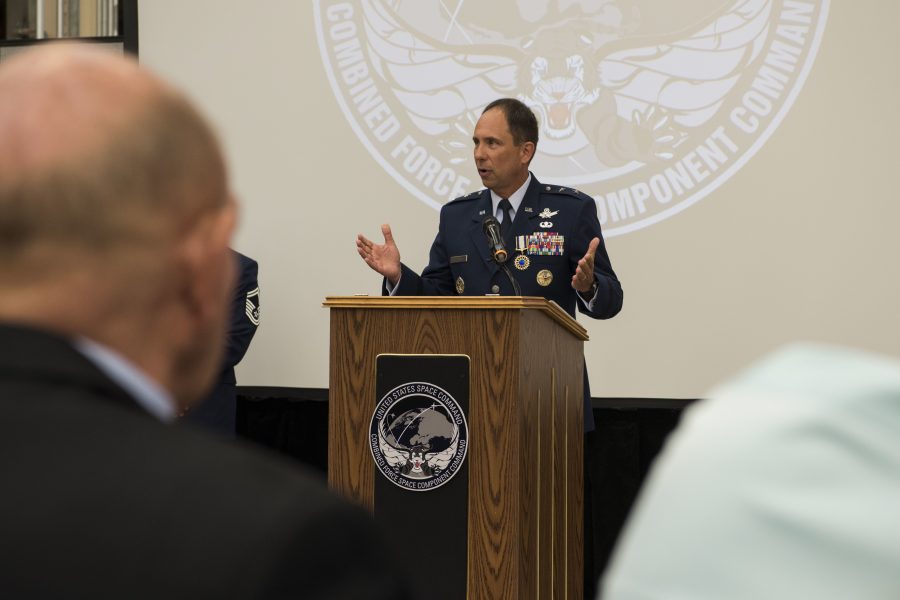A top Space Force official says the service is figuring out whether its inaugural round of personnel transfers brought in the right mix of career fields and ranks to form the armed force’s foundation.
“My guess is there are some of those boxes in those career pyramids and different career fields that we’re doing well, and some that we didn’t get enough,” Maj. Gen. John Shaw, who runs the Space Force’s Space Operations Command, said at a June 15 Air Force Association Airmen in the Fight event. “It’d just be a matter of figuring out how to move forward and doing what we can with that first set of human capital.”
About 8,500 people applied for nearly 7,000 Space Force jobs during the month of May. If the service members who opted to move from the Air Force aren’t enough to build a small, but well-rounded, initial group, USAF could again open the gates for additional transfers. Only officers and enlisted Airmen in satellite operations and a select number of other supporting career fields were allowed to apply for the first round.
The Air Force could continue to backfill certain ranks and career fields with assigned personnel until the Space Force can employ the right people on its own.
Shaw, who also serves as Combined Force Space Component commander at U.S. Space Command, noted promising legislative language that would authorize voluntary personnel transfers into the Space Force. Details of that provision are still unclear, but it might change the number of billets the Space Force is allowed to have or tweak the process of transferring members of the Army and Navy.
As the Space Force evolves, so will its training. Shaw said a new undergraduate space training course that began last October may already be slightly outdated. The service needs to improve its modeling and simulation as well, in order to “model a potential conflict and … change some variables, conduct wargames, and do this at a scale and scope that we have not really done up to this point,” he said.
Current simulators are essentially offline versions of the consoles that command and control satellites, but their abilities are limited.
“If you send a command, then it’ll show what happens with that command. You can put in the systems … something that might be wrong with the satellite and how the operator can identify that,” Shaw said. “What we don’t really have a very good ability to do is to do multiple platforms interacting with one another at the speed of war.”
The Department of the Air Force is trying to recover the flow of students through its space education pipeline, which has suffered from the coronavirus pandemic, he added. The pandemic also prompted the military to cancel April’s iteration of Space Flag, a major space training exercise that occurs multiple times a year. Shaw hopes future Space Flags can remain on schedule.
“This satellite is being approached by an unknown object, or maybe two unknown objects. What do you do to maybe defend it or to complicate an adversary’s calculus?” he said of tactical exercises like Space Flag. For more strategic training, he added: “What might be what we think is a policy constraint today, we challenge our warfighters to think, what would you do if that wasn’t a constraint? And we learn from that.”
The Schriever Wargame, another key space training event that typically occurs every fall, may still happen this year, he added. The Space Force is slated to start Basic Military Training in the fall as the service stands up a new Space Training and Readiness Command, Air Force Magazine previously reported.

